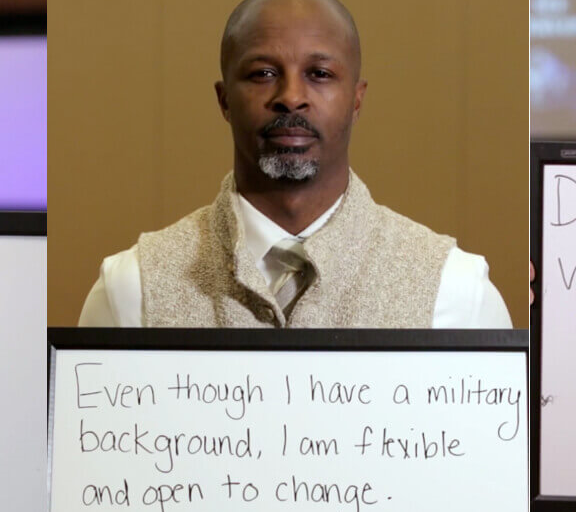Helping Great Clients Implement a Diversity Recruiting Strategy

Kathy Clem, Director of Diversity Recruitment, Allegis Global Solutions, an Allegis Group Company
As a diversity and inclusion (D&I) strategy expert, I have worked with many clients who understand the need to improve workforce diversity but struggle with how to prioritize their challenges and create a tangible, results-driven strategy. Most business leaders know that simply focusing on headcounts and “check-the-box” activities is not an effective way to improve diversity in talent acquisition. Instead, a focused strategy is needed.
A sound plan is built on a framework that addresses common challenges and areas of improvement across the talent acquisition process. If you are a human capital management professional looking to get the diversity recruiting conversation off the ground, consider some of these potential areas of improvement and the subsequent questions that may arise.
1) Data and Analytics:
By identifying key metrics and objectives, and establishing the means of collecting data over time, critical trends and performance insight will become visible. Is your talent acquisition process built to measure success and pinpoint issues that can affect diverse hiring? Are you looking at each stage of the hiring funnel and outlining areas for improvement? Are you holding your recruiters accountable for attracting and delivering diverse slates to hiring leaders?
2) Branding and Marketing:
How you market your culture, opportunities, and business will impact the perception of your company in the eyes of current, past, and future employees. Do potential candidates view the company as a desirable place to work? Is your message to new candidates genuine? Does it speak to the needs of targeted talent? Can they see themselves excelling in your organization? Is your messaging deliberate and intentional?
3) Candidate Experience:
Each stage of the applicant’s path is an experience that either builds or weakens the connection to the potential future employer. From accessing the career site to waiting for feedback or even greeting the front desk attendant at the facility, each part of the journey, no matter how small, influences how well a company attracts and engages diverse talent. Have you examined the experience your organization is providing to candidates through the whole process?
4) Job Descriptions:
Role requirements and the language used to describe the open job often convey biases that keep diverse applicants away. Have you considered best practices and technologies that can take bias out of the equation? Have you considered technology that assists with translating military experience?
5) Workforce Suppliers:
Today, many future employees enter the company as contractors or contingent workers. That means a solid diversity recruitment strategy should consider holding suppliers accountable for attracting and submitting diverse talent for consideration — even for contractors and freelancers. It should be a part of your Total Talent strategy. Does your diversity recruitment strategy address flexible talent and workforce suppliers?
6) The Recruiting Process:
From recruiter and hiring manager training to sourcing and recruitment marketing, an employer’s talent acquisition strategy and capabilities should align with its diversity and inclusion representation goals. Your point for improvement will always be visible in the candidate funnel. Perhaps certain recruiters are not delivering diverse slates of candidates for consideration, or hiring managers are unfairly, but unconsciously, rejecting diverse candidates for positions. Perhaps your sourcers are looking in the wrong places. Do you have the visibility and knowledge to identify critical links in the diversity recruiting process?
Executing the Diversity Recruiting Strategy
When it comes to developing and executing a strategy, clients can set high expectations if they work with a partner who is a trusted talent advisor. The relationship is consultative, focused on arriving at a solution for measurable D&I improvement. Elements such as training and education, accountability and transparency, clear goals, and a practical governance structure can make all the difference in building a strategy with a lasting influence on the business. At its very foundation, however, your D&I strategy won’t be measured by the amount of activity it entails; it will be judged by its results.
Case in Point: Improving Senior-Level Female Hires by 500 Percent
Recently, a global financial services client turned to Allegis Global Solutions to increase representation rates of black, Latino, and female talent within the senior-level ranks of the organization. Our organization partnered with the client to integrate a dedicated diversity recruitment team into the talent acquisition process.
Included in the effort was a focused diversity sourcer embedded in the client talent acquisition team, use of advanced search tactics and technology, leveraging established networks supported with attendance at diversity recruiting events, a referral program, calendar management, and documented outreach activities. A diversity recruitment dashboard was established to track all activity, adjust the strategy as needed, and quantify impact. The year-over-year results included a:
- 500% increase in female hires
- 100% increase in representation of black candidates in the final interview slate for open roles
- 200% increase in Latino representation at the business interview stage
As this example shows, the right talent partner should have the commitment and knowledge to advise on direction, evolve to address new needs, and take ownership of results, not just activities. For companies that forge the right relationships, the rewards are significant — a workforce advantage in a world of heavy competition and talent scarcity.


